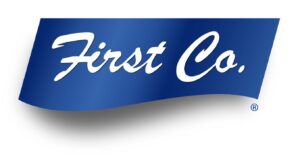Introduction
Living in Dallas means dealing with a climate that swings from hot summers to cool winters, making a dependable HVAC system a top priority for any large venue or multi-occupant facility. When it comes to managing these systems, identifying potential issues early is key. Regular maintenance plays a vital role in keeping things running smoothly, but knowing when repairs are needed can help you avoid costly breakdowns and ensure comfort for everyone inside.
One HVAC component to keep an eye on is the horizontal heat pump. This system is popular for its versatility and efficiency, especially in larger buildings. However, even the best-maintained units can develop issues over time. Being able to recognize the warning signs that your horizontal heat pump might need some attention can save you from a lot of inconvenience later on. Let’s explore these indicators and find out how you can handle them effectively.
Signs of Inefficient Performance
When a horizontal heat pump starts showing signs of wear, you might notice things just don’t feel right indoors. Here are some key indicators that your system isn’t working as efficiently as it should:
1. Inconsistent Temperatures
- Rooms feel warmer or cooler than they should be, despite the thermostat setting.
- Some areas might be perfectly comfortable, while others are uncomfortably hot or cold, suggesting your system isn’t distributing air evenly.
2. Unusual Operational Noises
- If you notice new or intensified noises like grinding, rattling, or banging, it might be a sign that parts are loose or failing.
- A quiet, humming operation is what you want; anything outside of that could mean trouble.
3. Increased Energy Bills
- When a system struggles to perform, it often uses more energy, leading to higher monthly costs.
- A sudden spike in your bill without a clear explanation should be a red flag.
These signs tend to signify that your heat pump is not operating at maximum efficiency and could benefit from professional attention. Addressing these issues early can prevent more serious problems down the road. Moreover, keeping a close eye on these factors helps maintain consistent comfort and optimal energy usage, which is crucial for multi-occupant spaces. By spotting these inefficiencies and taking prompt action, you not only extend the life of your system but also improve the overall comfort of your facility.
Unusual Noises and Smells
A heat pump might not always stay silent as it ages. Sounds beyond the typical quiet hum are often early warnings. If the unit starts making clanging or squealing noises, it’s likely that some mechanical parts are wearing out. These noises could signal loose components, worn belts, or perhaps an issue as simple as debris caught inside.
Equally telling are unusual smells emanating from the system. A burning smell might indicate overheating wires, while musty odors could point to mold, especially within the unit or the ductwork. Each smell is unique and deserves attention. When these occur, contacting a service technician is the safest move. Ignoring these signs could lead to more extensive damage and a more challenging repair process later on.
Visible Leaks and Moisture Issues
Leaks and excessive moisture around your heat pump are clear indicators of trouble. Water pooling near the unit might suggest that the condensate drain is clogged or the coil is malfunctioning. Not only can standing water lead to property damage, but it can also foster mold growth, which could affect indoor air quality.
Aside from visible water, moisture on surfaces or steam from vents can signal problems too. To prevent further complications, address moisture issues promptly:
- Check the condensate line for blockages.
- Ensure that the drain pan is not overflowing.
- Watch for frost or ice build-up, as this suggests refrigerant issues.
Professional intervention can ensure these problems are handled efficiently and prevent any disruption in your facility.
Frequent Cycling or Long Run Times
Consistency matters when your heat pump starts. If the unit cycles on and off frequently, the system might be too large or small for your property, or there might be issues with the thermostat. Similarly, if the heat pump runs for unusually long periods without reaching the desired indoor climate, there might be more serious underlying issues.
These problems can diminish energy efficiency and increase wear on the system. Here’s what to monitor:
- Confirm that the thermostat is properly set.
- Inspect filters and ducts for obstructions that might force the system to work harder.
- Look for issues with the blower motor, which could alter run times.
Quickly identifying and rectifying these issues will keep energy costs down and ensure a comfortable environment.
Prioritizing Regular Maintenance
Recognizing the signs of potential breakdowns and scheduling timely repairs can significantly extend a heat pump’s lifespan. Routine check-ups are an investment in the system’s future performance and efficiency. Prior attention to minor issues helps preserve efficiency and prevent small problems from snowballing into major repairs.
Routine maintenance checks done by professionals ensure everything is up to par, from internal mechanics to external components. With regular attention and maintenance, your system can deliver consistent comfort for many years, making it a reliable entity throughout Dallas’s varying climate conditions.
Ensure your system operates efficiently and reliably throughout Dallas’s climate by exploring maintenance solutions tailored to multi-occupant facilities. Trust First Co. to help extend your system’s lifespan and maintain consistent comfort with expert care for your horizontal heat pump. Regular professional upkeep not only lowers energy costs but also ensures a reliable, comfortable indoor environment.

